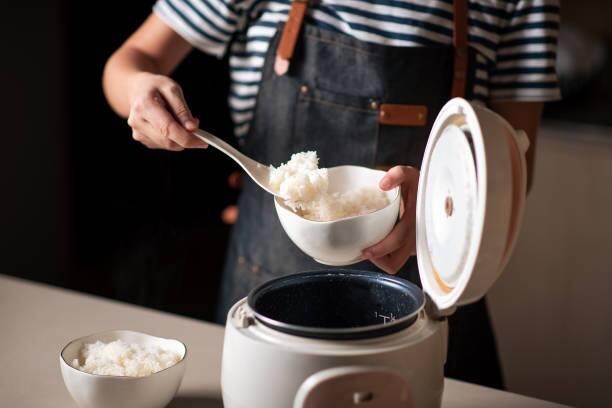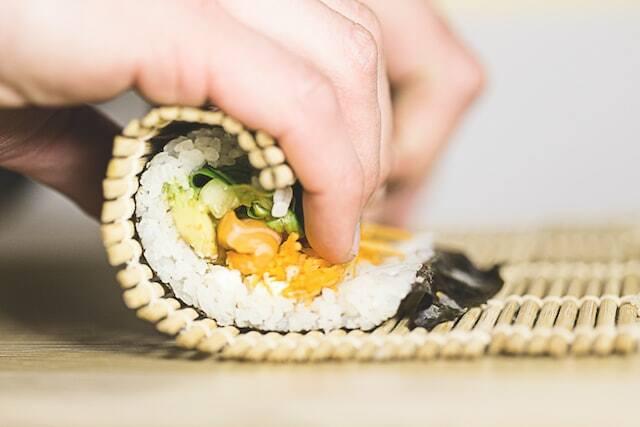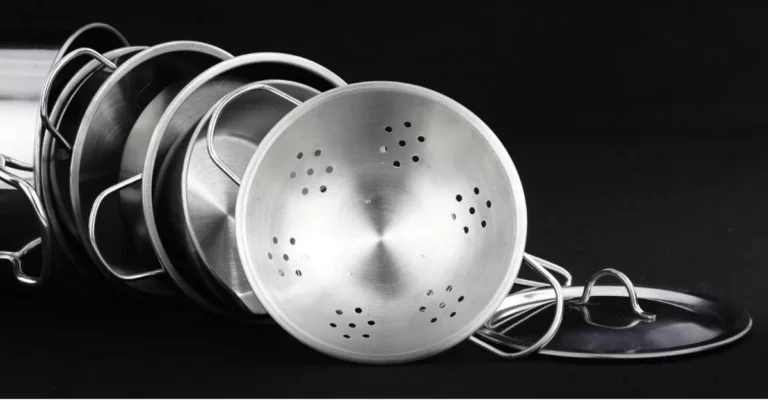One key aspect to consider is the capacity of the rice cooker. Different models come with varying capacities, ranging from compact sizes suitable for individuals or small families to larger models ideal for larger households or commercial settings.
Assessing one’s cooking requirements and considering the amount of rice typically prepared will help in selecting the appropriate capacity.
Moreover, features and functionalities vary among rice cookers. Some models come equipped with advanced technology, such as fuzzy logic or induction heating, allowing for precise temperature control and customized cooking options.
Others may offer additional features like delayed start, extended keep-warm settings, or multi-cooking functions for added versatility. Understanding the available features and determining which ones align with personal cooking needs and preferences is crucial in making an informed choice.
To add to it, researching and comparing different brands and models can provide insights into the quality, reliability, and durability of rice cookers. Reading customer reviews and seeking recommendations from trusted sources can assist in identifying reputable brands and models that have a track record of delivering consistent results and long-term satisfaction.
Investing in a high-quality rice cooker tailored to one’s needs can significantly enhance the cooking experience and deliver consistently delicious results.
FAQ
Why Do You Need Rice Cookers?

A rice cooker is basically a countertop gadget that allows people to cook rice without any manual intervention. It can automatically cook rice to perfection, and all you need to do is pour in some rice grains, a few cups of water and push a couple of buttons.
They can be an induction system or work on batteries, but either can cook your rice meals in a jiffy.
Now you may ask why does one need to bother with a rice cooker? I mean when you can easily cook rice by yourself without owning any such appliance. All you have to do is add your rice and water, bring them to a boil and simmer while covering the pot.
Well, let me ask you a few things. Do you cook perfectly textured rice every time? Is it fluffy sometimes and dry the other times? Does it ever turn into anything resembling slime or become mushy because you forgot to take the lid off in time? Maybe you miscalculated the water measurement or forgot to turn down the heat.
Relax, we are all prone to human errors so it’s no shame to sometimes need the help of a machine who can do the job more consistently each time. The best part? You don’t have to wait for it to cook as long as it takes to do it manually. You don’t even have to remember that it’s cooking, there will be a timer to alert you when it’s done.
There’s no need to keep meddling with the temperature and most rice cookers these days will even keep the rice warm till the time you come to have your lunch.
Modern rice cookers can now make a variety of rice meals, be it sushi rice, glutinous rice, short grain or long grain. Again, with only the push of a few buttons.
There are added features that make cookers capable of making whole meals like quinoa, oatmeal or even risotto. They can steam vegetables and some can even bake cakes.
With all the added functionality just waiting to make your life easier, why just stick to the traditional method of cooking rice that basically seems like a waste of time and effort at this point.
What To Look For In A Rice Cooker?
- Fuzzy Logic Technology
What is it? Well without getting into semantics we can say it is an algorithmic inference that a programmed machine makes based on a few input rules.
Basically, the cooker is programmed in a way that it can make intelligent decisions regarding how you want your rice to be.
It will dynamically calculate the temperature as well as decide which settings to apply based on the amount of rice and water you put into it and a number of other factors.
This helps in dramatically reducing the manual effort required to apply the correct settings and increases the precision of cooking the exact texture of rice (or anything else) you want. - Time taken for a cooking cycle
This one is pretty self-explanatory. The sooner food gets cooked, the better.
A crucial factor to look for in cookers is how long it takes to cook different kinds of rice. Nobody wants to spend money on a gadget that takes a lifetime to cook some rice for them.
So, it’s important to look for cooking cycle times while comparing with other cookers. - Capacity
The amount of uncooked and cooked rice a cooker can hold is essential in deciding the right rice cooker for your needs.
It can go from holding 5 cups to 20 cups of uncooked rice, but it depends on what you need the extra storage for. Are you cooking for a family? Or do you only need it to save some time preparing lunch since you live by yourself? In the latter scenario, I’m sure you wouldn’t want too many carbs in your diet so a smaller capacity would do well. - Timers and Indicators
These are very important because what’s the use of an intelligent machine if it can’t remind us when to stop cooking or if we are doing something wrong in the process? Delay timers, error indicators and beeping when the process is complete are absolutely vital in letting an appliance do all the work. - Versatility
Rice cookers these days can go beyond just cooking rice. They can cook all shapes and sizes of rice grains and can even be used to make whole meals in case you need them.
Soup, steaming vegetables or making oatmeal for breakfast – you name it, and there seems to be an option for everything.
While this isn’t very necessary if you are only looking for basic features, it will still be a nice thing to have. - Size
We all want appliances that prioritize room management and do not consume too much space around the kitchen.
Additionally, we would want them to not be too bulky or heavy so it’s convenient to wash and move around. - Portability
A retractable power cord and foldable handles can do wonders for portability.
They don’t make very large rice cookers these days but if we look for these simple features in our products, it can make our life so much easier by letting us take our cookers with us when we go on trips.
Portability is significant because who wouldn’t doesn’t want to make the most out of their cookers? And that won’t be possible if we can only carry it around the kitchen. - Cost
This doesn’t even need to be on the list but everyone has a budget and it will serve us well to look for the best product that fits our needs in said budget.
Rice cookers are getting a lot of functionalities these days and I want you to get the best features your money can get you. So make sure to do thorough research.
What Kind of Rice Do You Need for Sushi?
If you have ever had Sushi then you might know that they generally use short and medium grain rice and is sticky in texture.
The rice tends to be sticky so that it can hold all the ingredients inside it. And that includes fish vinegar, salt and sugar.
It is important to have your rice sticky and short to medium-grained.
If you use long-grain types like Jasmine rice or Basmati rice, then they have a higher ratio of amylose to amylopectin which makes them have a fluffier texture that won’t stick together. They may even turn hard when it’s cold, thus making it difficult to make Sushi with the said texture.
Usually, Japanese short grain or California medium grain can be used instead. These can include cauliflower rice, brown rice or even black rice. These have a higher ratio of amylopectin to amylose which makes it sticky and easier to roll. Once cooled down they stay soft and retain their shape.
How Do You Make Sushi Rice with a Rice Cooker?
Well firstly after picking the right kind of grain, you will also need to add the required amount of water so the grains are cooked at an adequate moisture level and don’t get too wet or too dry.
Then you have to select the right temperature and time on the rice cooker to prepare the perfect sticky rice for Sushi.
Here’s a simple recipe for you to follow along with your rice cooker to help you whip up some delicious sushi.

Ingredients:
- White rice grains – 2 cups
- Water – 2.5 cup
- Rice vinegar – 0.5 cup
- Extra virgin olive oil / vegetable oil – 2 table spoons
- White sugar – 2 table spoons
- Sea Salt – 1 teaspoon
Procedure:
- Rinse rice in cold water and keep aside. Add the water to a rice cooker.
- Boil the water, then bring the heat down to a low.
- Let it cook for about 20 minutes or until the cooked rice has turned firm but not too crunchy.
- In a saucepan, add the other ingredients. On medium heat, keep cooking till you can’t see the sugar anymore.
Note: If you have store-bought sushi vinegar, they have the sugar and salt already mixed in. - Add this vinegar mixture to the rice. Stir well.
- Spread out your Nori (seaweed) and add your rice on top of it with a paddle. You can experiment with the fillings or stick to the classic salmon, avocado and cucumber.
- Add some optional spicy mayo and roll them up.
- For the dipping sauce, you can go for a mixture of soy sauce and wasabi paste.
*Some rice cookers have a dedicated sushi option to help you along.
Comparing the Best Rice Cookers in The Market
I have compared the best rice cookers in the market in the below table, based on their top features.
However, if you wish to read more about each of these products – I have posted an article here for your convenience, that talks about each rice cooker’s advantages and drawbacks and whether they would suit your specific culinary needs.
- Capacity: 5.5 cups uncooked rice, 10 cups uncooked rice
- Fuzzy Logic technology
- Foldable handles, retractable power cord
- Capacity: 20 cups cooked rice
- User-friendly control panel
- Fast cooking cycles
- Capacity: 10 cups uncooked rice
- BPA free steaming basket
- Removable inner lid
- Capacity: 6 cups uncooked rice, 10 cup version also available
- Extensive menu options
- Auto steam cleaning
- Capacity: 5 quarts
- Teflon coated cooking pot and crisping plate
- Dishwasher safe
- Capacity: 6 quarts
- Customizable pressure levels
- Tri-ply bottom construction
- Capacity: 8 cups of cooked rice, 4 cups uncooked rice
- 15 hour delay timer
- ‘Keep Warm’ setting
- Capacity: 8 cups of cooked rice, 4 cups uncooked rice
- Steam basket doubles as rice rinser
- Comes with serving paddle and measuring cup
- Capacity: 10 cups of uncooked rice
- In-built sushi rice option
- 1 year warranty
- Capacity: 5 cups uncooked rice, 10 cup version also available
- Uses induction system for even heating
- Retractable power cord




